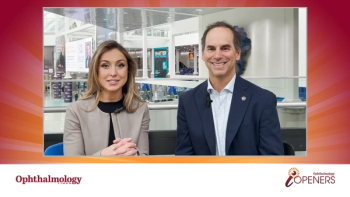
Communication is key to successful organizational change
Change in an office environment can more effectively promoted by management by understanding diverse motivations and personalities, acknowledging a perceived loss, and sympathizing with feelings.
Key Points
Las Vegas-Introducing change to an office environment always triggers a reaction, but two things are certain: the reaction is very individual and can be predictable.
Knowing the personality types in an office can give management an advantage in effectively promoting change, according to Russell J. Igoe, ABOM, NCLC, who gave his insights on strategies for anticipating employee reactions during the presentation "Effective change communication: strategies and tools for success" here at the annual meeting of the American Academy of Ophthalmology. Igoe is director–Eye Care Services, Group Health Cooperative, Tukwila, WA.
Research shows that the coping mechanisms people use to process change are similar to the grieving process, he said. Feelings of loss and fear come into play as people see things they are emotionally attached to-for example, the location of a workstation or the predictability of certain aspects of the day-taken away.
Understanding the different motivations of diverse employees, acknowledging a perceived loss, and sympathizing with their feelings goes a long way in moving from fear to action, Igoe said. During times of stress, people tend to gravitate to one primary area.
Igoe groups the primary personality motivators into categories:
Autonomists prefer to work independently, like to push the envelope, avoid shared activities, and abhor meetings. They may appear antisocial or uncooperative and uncommunicative. They do best when they are allowed to set their own goals, exercise their creativity, and are involved in brainstorming.
Balancers tend to be Generation Xers. They work to earn enough money to play. They enjoy each day being different from the day before; routine is a stressor.
Balancers have a wide variety of interests and prefer not to work overtime or weekends. They may be seen as clock-watchers who lack dedication and a work ethic.
Balancers feel satisfied when their outside interests are acknowledged. They can bring objectivity and perspective to a team setting.
High achievers are competitive, have a strong desire to excel, and set their own goals. They can suffer from burnout, are generally impatient, and are frustrated by perceived administrative inefficiencies. Their needs are satisfied when they receive positive feedback tied to a specific outcome or personal objective. They measure success by achieving a target.
Influencers like leadership roles and spending time with decision-makers. They may appear to be political or manipulative to others and may flaunt outward symbols, such as status or titles. Influencers can cause a great deal of friction on a team. They believe their needs are satisfied when they are given credit for an idea.
Relationships are motivated primarily by a happy workplace. They tend to be friendly, extroverted, and build rapport easily. They enjoy organizing social activities and like harmony. They may focus on a harmonious workplace at the expense of getting work done. They may be seen as lacking focus. They believe their needs are met by learning new skills and interacting with others. Relationships tend to be good trainers.
Security seekers like predictability and tend to be late-career people. They crave information and are described as dependable, but they have difficulty with change and may require individual attention during times of change. They prefer a slow, steady approach to change, with concrete goals.
Team dynamics
No matter what the mix of people on a team, a guiding coalition is a necessity, Igoe said. Having people in place to act as guides and provide vision is important. To that end, Igoe recommended creating a vision or mission statement, which can serve as a beacon to reassure everyone on the team that there is a goal, a purpose for the changes. A mission statement also provides a consistent message.
Organizing a "change team" will help lead people to a new place and allow change to happen, he said. Be creative in who is invited to be on the change team. Look outside and bring in outside vendors or members of other teams to offer a fresh perspective.
"Physician involvement is critical to the point of nothing happens at our place unless there is physician leadership involved," Igoe said. He added that physician involvement will require a lot of back-and-forth discussions and several presentations to bring the physicians on board. Develop tension to prevent people from becoming comfortable with the status quo, Igoe said. Tension involves looking at a problem and challenging everyone to make a difference.
Newsletter
Don’t miss out—get Ophthalmology Times updates on the latest clinical advancements and expert interviews, straight to your inbox.




















































.png)


